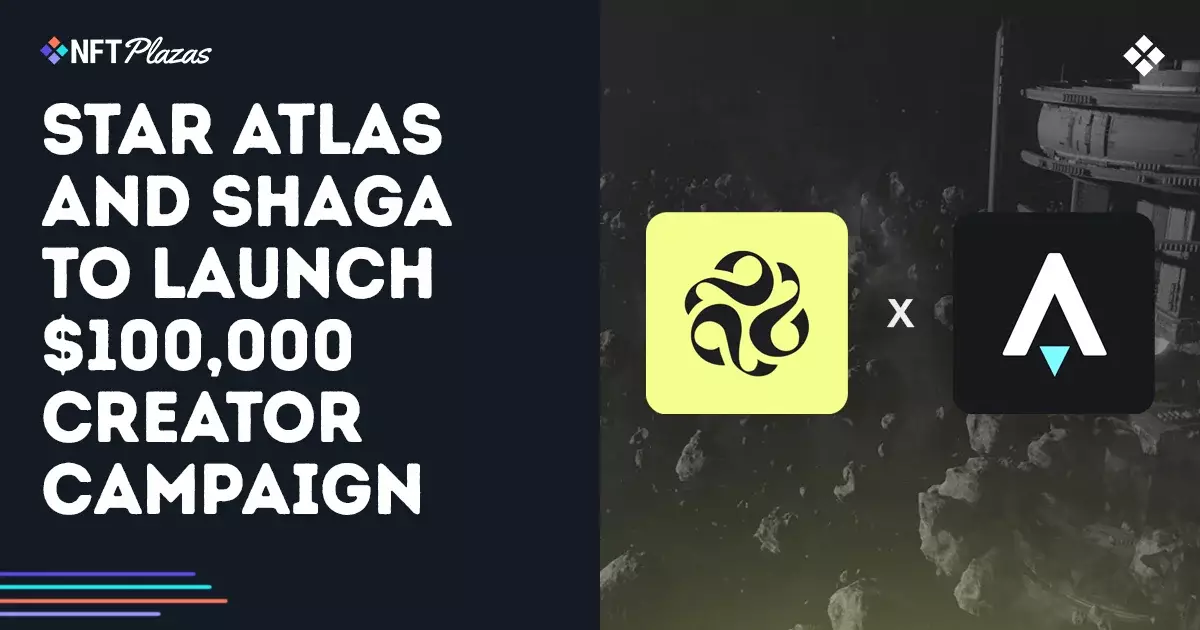In a landscape where mediocrity often reigns supreme, Star Atlas emerges as a commendable challenger, boldly setting its sights on the integration of decentralized technologies and community engagement. The recent partnership with the Twitch add-on layer Shaga has yielded a thrilling $100,000 Creator Campaign that could redefine how content creation and interactive gaming intersect. Not solely a marketing gimmick, this initiative encapsulates the very ethos of Web3—a deep-seated belief in community participation, player ownership, and fair rewards for digital creators.
The stakes are poignantly high: creators can earn their share of an enticing prize pool by simply allowing their viewers to step in, manipulate gameplay, and share highlights of these interactive moments. This perfect blend of engagement and community interactivity fosters a space where genuine connections can thrive, significantly enhancing the purity of gameplay. While traditional gaming often felt like a passive affair, the Star Atlas and Shaga synergy provides an imaginative platform for real-time competitiveness and connection.
Digital Ownership: The Core of Star Atlas
What truly sets Star Atlas apart is its unwavering commitment to digital ownership, an aspect that often gets glossed over in mainstream discussions about video games. Through the Solana blockchain, the game guarantees that players retain control of their in-game assets, which encompass unique ships and valuable resources. This innovative approach aligns seamlessly with contemporary economic theory, as players are not merely participants; they are stakeholders in an evolving digital economy. The mere notion that a digital asset can be owned, traded, and appreciated in value marks a significant departure from the antiquated model where players poured hours into games without any real-world benefits.
At present, the $ATLAS token acts as the driving force of this economy. With a burgeoning market cap exceeding $22.6 million—a figure that symbolizes both potential and burgeoning interest—investors and gamers alike are recognizing the inherent value in this space. The impact of such digital ecosystems will only grow as more players buy into the roadmap envisaged by the Star Atlas team. This is a priority that reinforces trust in a largely skeptical gaming community weary of deceptive monetization strategies.
Shaga and Its Role in Transforming Engagement
Shaga’s cloud gaming platform stands as a revolutionary tool in democratizing access to gaming. With the ability for everyday gamers to leverage powerful gaming rigs and allow viewers to play remotely, it has the potential to upend the traditional streaming model. By shifting away from exclusive hardware requirements, Shaga embodies the essence of inclusivity—enabling anyone with a smartphone to enter into the vibrant gaming landscape, thereby broadening the audience for titles that may have once been locked behind premium access barriers.
The introduction of ultra-low latency technology further enhances the gaming experience, allowing for seamless interactivity between streamers and their audience. As viewers become players, the conventional dynamics of content consumption are irreversibly altered. This intersection of viewer engagement and gameplay could lead to lucrative monetization avenues, making streaming a more viable career pathway for aspiring gamers.
The Broader Implications of Creative Collaborations
Such partnerships signal a larger trend within the industry, where collaborative efforts among blockchain games, content creators, and traditional platforms are becoming imperative. Star Atlas and Shaga’s fusion of talents signifies a broader movement toward enriching gaming ecosystems. Players and creators alike must capitalize on these opportunities, recognizing the potential of synergistic collaborations that fuel innovation.
Moreover, the role of AI in the gaming sphere, as evidenced by the partnership with SingularityNET, underlines an exciting future where uniquely responsive NPCs become the norm. Features like personalized guidance and adaptable gameplay will redefine player experiences, merging gaming with artificial intelligence in ways we’ve only begun to imagine. It underscores an essential point: that the future of gaming revolves around community collaboration, creativity, and adaptive technologies.
As the gaming landscape continues to evolve, the stakeholders range from developers and content creators to players. Each has a vested interest in this budding economy, underscoring a collective responsibility to drive the industry forward. As we witness the rise of these innovative gaming frameworks, the call for a shift remains paramount—one that prioritizes collaboration, financial ownership, and unparalleled opportunities for every participant.


Leave a Reply